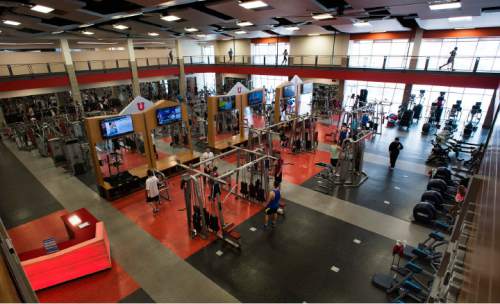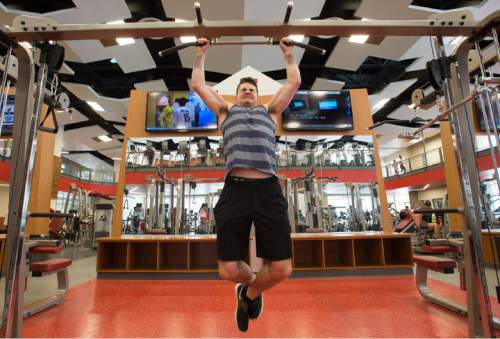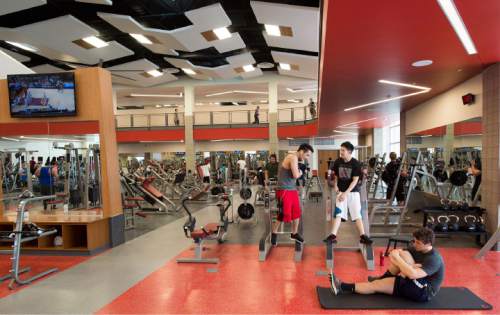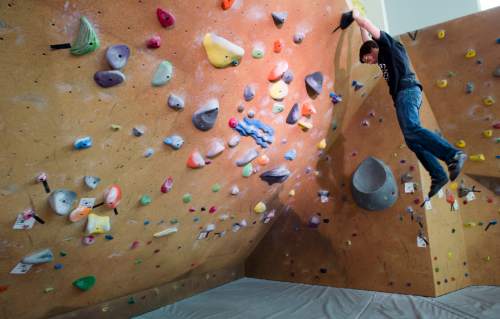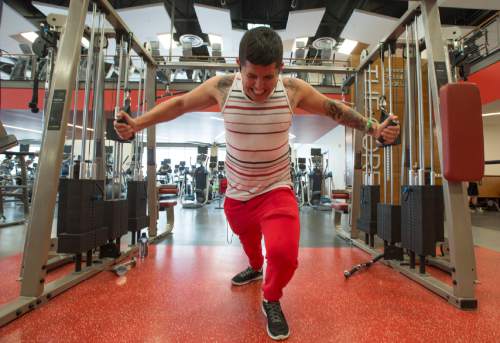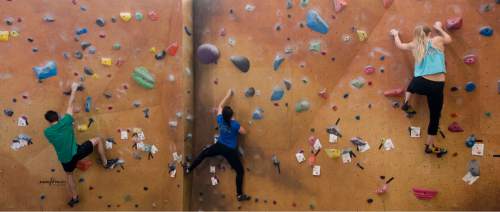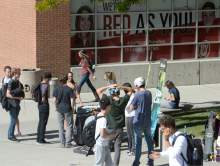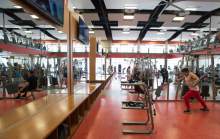This is an archived article that was published on sltrib.com in 2015, and information in the article may be outdated. It is provided only for personal research purposes and may not be reprinted.
Tuition doesn't cover all of it.
Utah students and their families will pay more next year for the nonacademic costs of college: new gyms, buildings, sports with no ticket revenue and health services, among others.
Utah State University students will shoulder the stiffest increase, 12 percent — a hike high enough that it required approval from USU's student government.
The $1,046 fee, up from this year's $930, supports construction of a $30 million student recreation center set to open next fall.
Recreation is a big-ticket fee item for University of Utah students as well.
They will pay $120 a year — about 10 percent of their total fee bill — for the new $50 million George S. Eccles Student Life Center, which debuted in March. Students are expected to continue contributing to the center for 20 more years at most. The Eccles family foundation paid $3 million for the building that bears the name of one of its patriarchs.
But after 15 years of fee increases, U. students will get a break next year, with a bump of about $1.
After spotting the life center on the list, student members of a U. fee panel urged school leaders to keep the rate flat in a series of closed meetings. "We were kind of encouraging administration to do that," said Rachel Wootton, senate chair for Associated Students of the University of Utah.
Southern Utah University's student fees also will stay flat.
Not so at the state's other public colleges. Across the eight institutions, the average fee for next school year is $746.
The Board of Regents, which oversees the state's public colleges, signed off on the additional costs March 27.
Fees at the U. have doubled in the past 15 years, climbing from $526 in 2000 to $1,060 this year.
The rate students pay varies based on the number of credit hours they take.
In comparison, the U.'s tuition has tripled over the same time period, jumping from $2,278 in 1999-2000 to 2014's $6,889 for a 15-hour class load.
Higher-education officials say the new "student life" centers are good investments — providing exercise equipment and classes and keeping students on campus longer.
New climbing walls and treadmills aren't the only items student fees pay for. For example, fees make campus theater and musical performances free for students, and pay for upkeep on buildings, according to Cathy Anderson, U. vice president of budget and planning.
"That's what we want — our students participating more on this campus," Anderson said. "We're interested in students being engaged on campus and not just for their classes."
A 2011 legislative audit found the U. set fees that often were too high for the school's needs. For example, the collegiate readership fee, which paid for national newspapers distributed on campus, raised more money than the program cost, the audit found. U. officials acknowledged some deficiencies and updated school policy. The readership cost has stayed flat at $8.60 since 2010.
The U. now requires a committee, including students, to review and develop fee policies, Anderson said.
A panel reviewed them in the past, but the school had no explicit requirement before the audit.
At Dixie State University, students will pay 7 percent more in fees, largely for a planned $50 million Human Performance Center that officials hope to open in the next five years. It will have classrooms, a gym and an indoor track and house lifestyle management and other classes, said DSU spokesman Steve Johnson.
Dixie State students also will pay $160, up from this year's $130, to help cover travel, uniforms and other costs for the school's Division II sports teams.
That money paid by students is up to 70 percent of the athletic department's budget, said Athletic Director Jason Boothe.
"We don't take it for granted," Boothe said, adding that student payments do not go toward scholarships or coach salaries.
Games are free to students and rarely draw more than 5,000 fans. "We don't have the TV deals," Boothe said, "we don't have the conference bowl money."
Not all students play sports or attend athletic events, Boothe acknowledges. But they represent the university nationally and tie it to the community.
Dixie State's student governing body signed off on raising fees from $660 this year to $712 next year.
Twitter: @anniebknox






